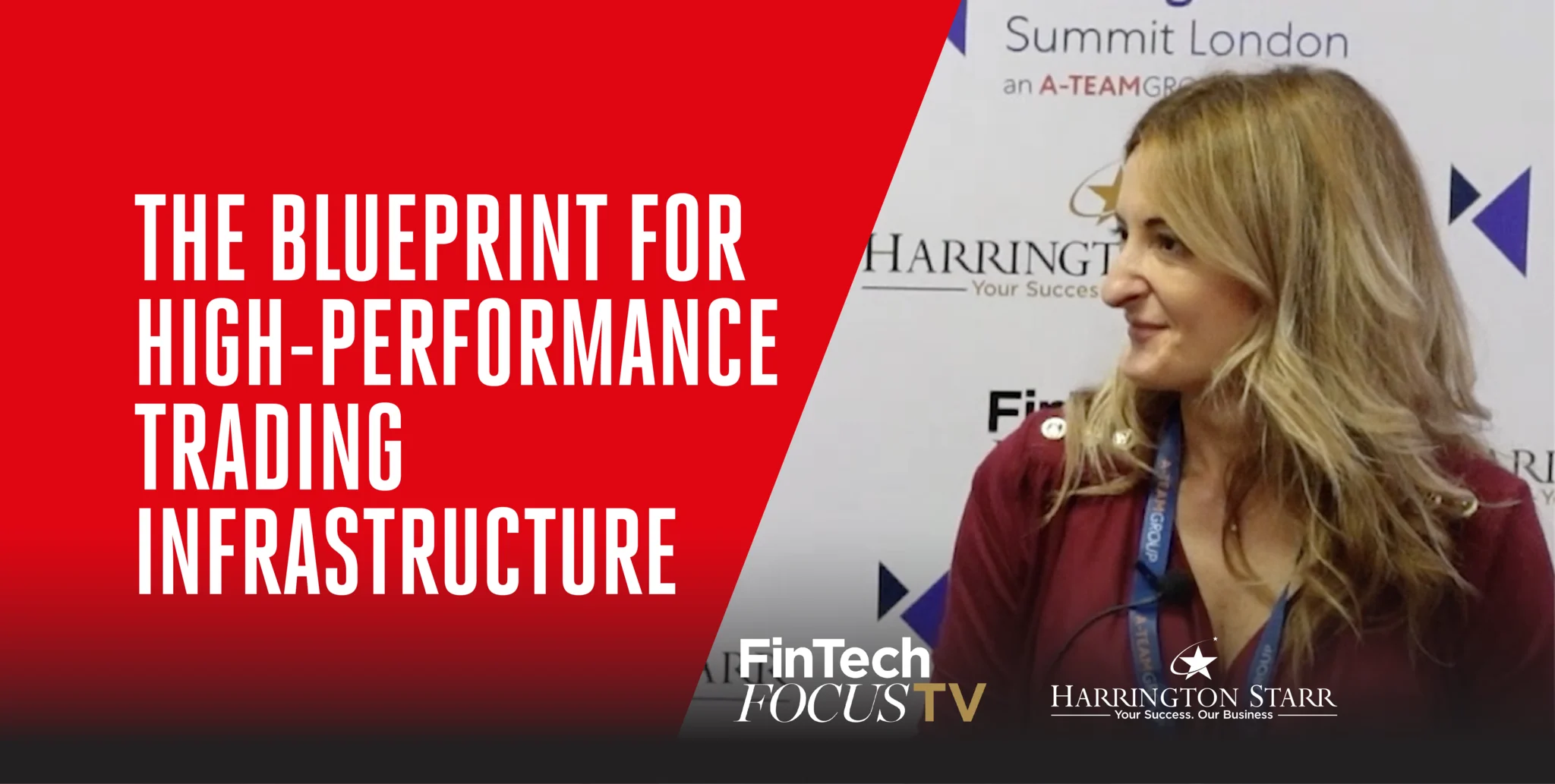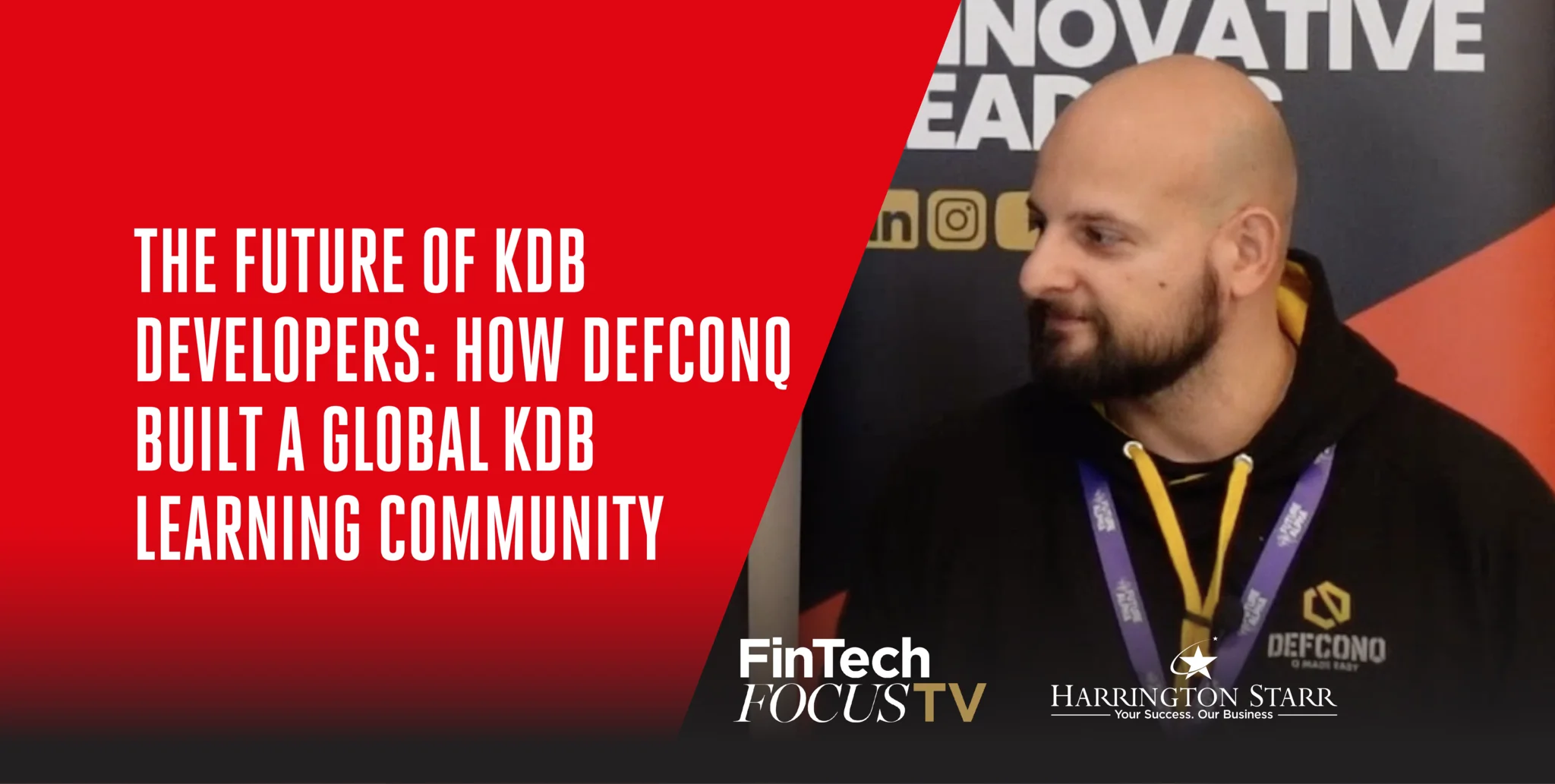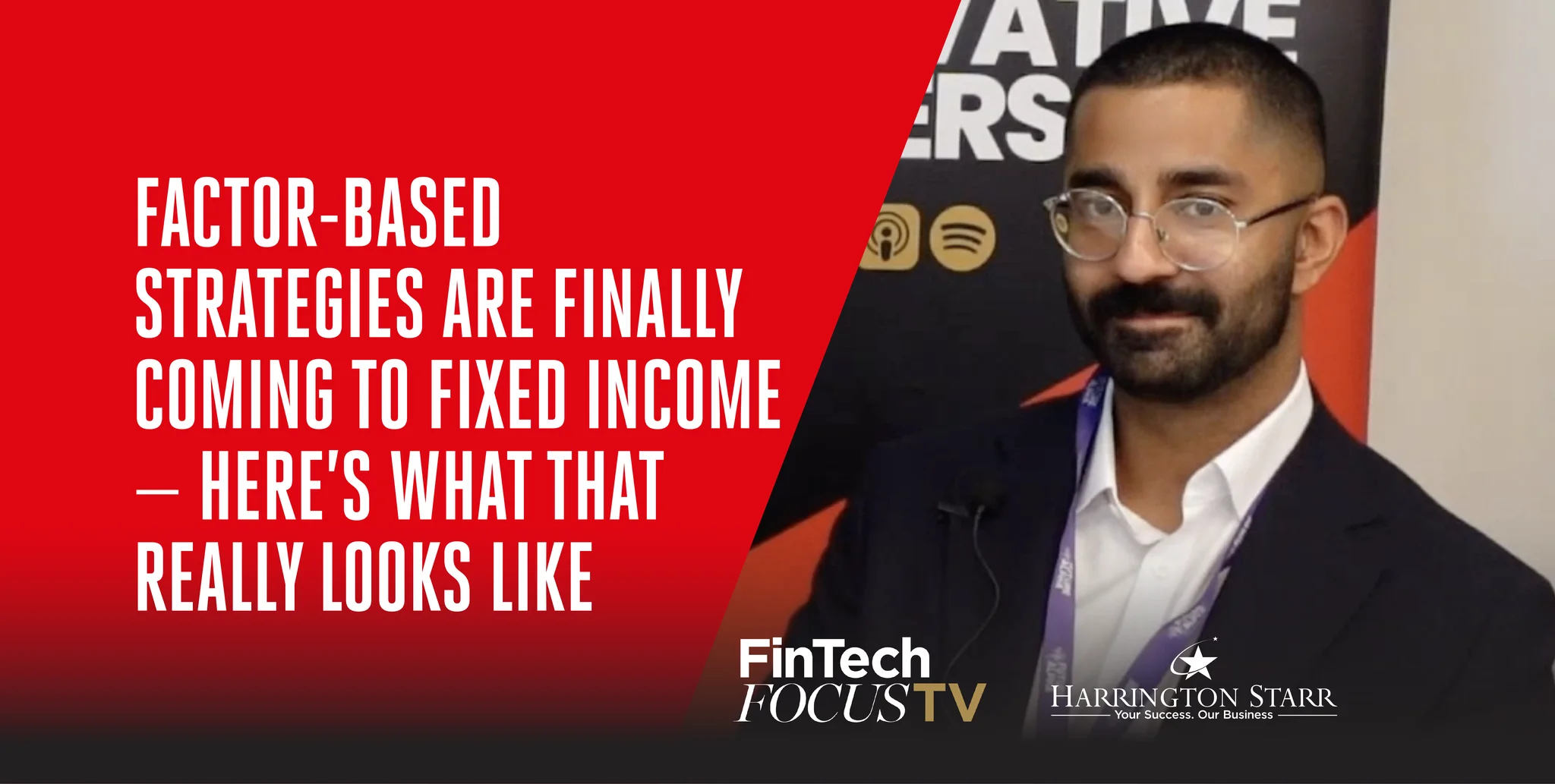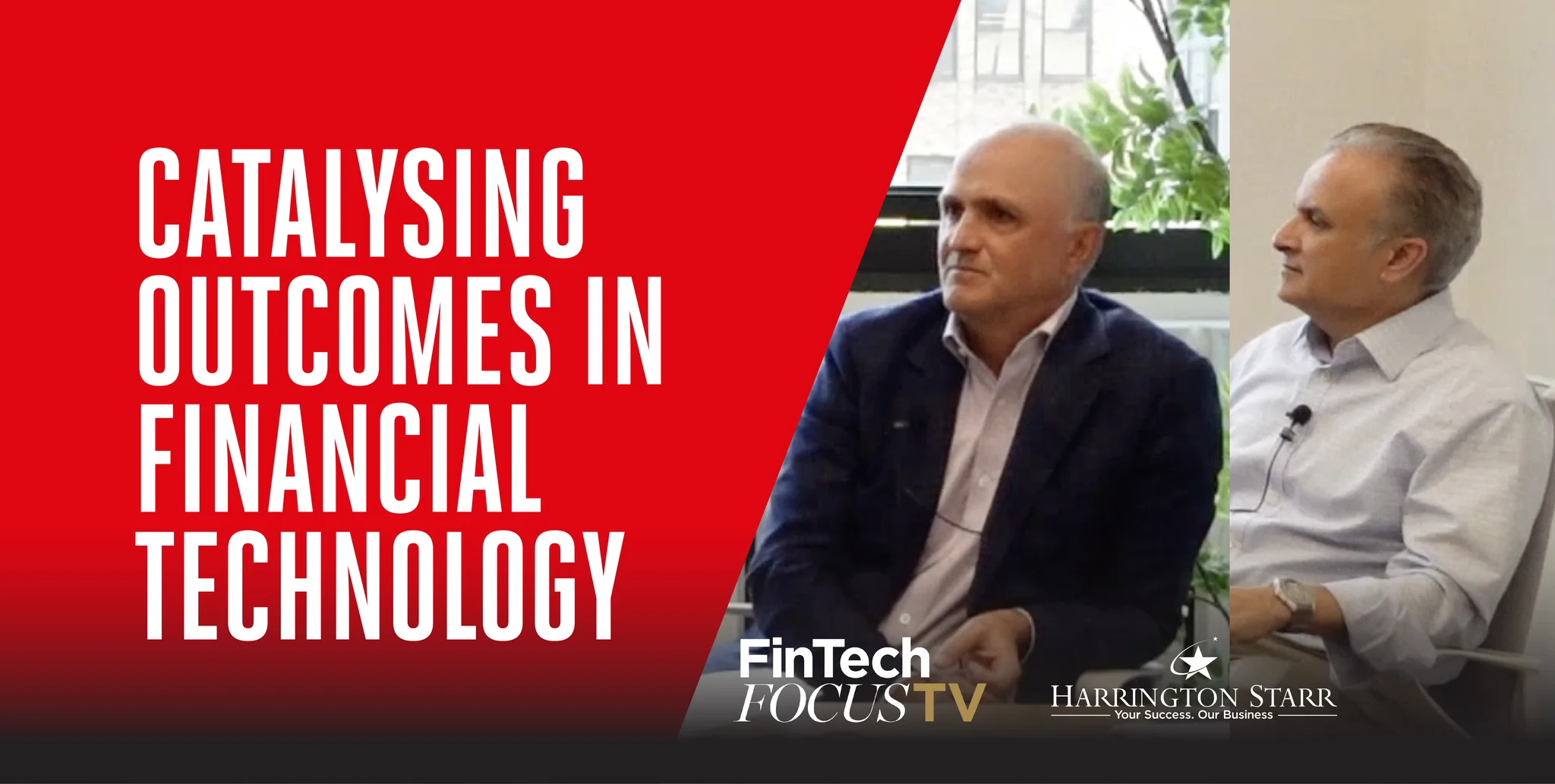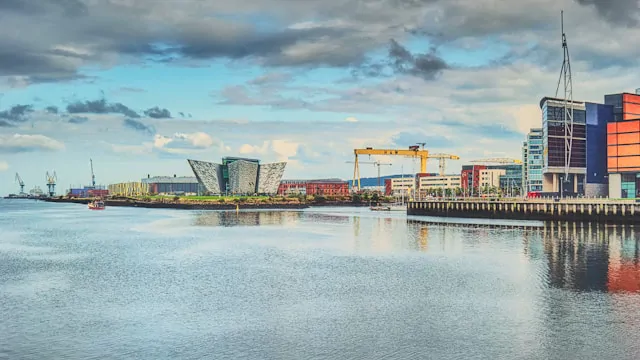Building the Future of Trading Infrastructure in FinTech
Recorded live at the Future of Capital Markets Tech Summit: Buy AND Build Event 2025, this episode of FinTech Focus TV sees Toby and Diana Stanescu, Finance and Capital Markets at Keysight Technologies, sit down for an insightful conversation.
The discussion takes place against the energetic backdrop of one of London’s leading trading technology events, where experts, innovators, and FinTech leaders gather to explore how technology continues to transform the world of trading. In this insightful conversation, Toby and Diana unpack the evolution of buy and build strategies in trading, the growing importance of infrastructure visibility, and how Keysight Technologies is helping redefine what it means to deliver precision, performance, and trust in capital markets.
From Hewlett-Packard to Keysight Technologies: Precision Engineering Meets Capital Markets
Diana opens the conversation by describing Keysight Technologies' unique DNA. Although some in the FinTech industry might not immediately recognise the Keysight Technologies name, most will know its origins. Formerly the test and measurement division of Hewlett-Packard (HP), Keysight Technologies carries forward a legacy of engineering precision, measurement accuracy, and innovation at signal level.
Diana explains that this same heritage, which has long served industries ranging from aerospace to defence, has now been brought into the world of capital markets. Keysight Technologies' focus on ultra-low latency measurement, analytics, and trading infrastructure has positioned it as a critical player for firms operating in high-speed financial environments.
In trading technology, every microsecond counts. Keysight Technologies' expertise in measuring signals with extreme precision has naturally translated into helping trading firms achieve the visibility and control they need in today’s data-driven, low-latency world. This cross-industry DNA, bridging aerospace precision and capital markets performance, sets Keysight Technologies apart in a crowded FinTech ecosystem increasingly driven by speed and reliability.
The Power of Partnership: Keysight and InstrumentiX
One of the biggest announcements discussed in this episode is Keysight’s recent investment in InstrumentiX. Diana explains that the collaboration between the two firms began years ago, initially driven by customer demand. Both companies found themselves working together organically because clients recognised the synergy between their products and wanted to see deeper integration.
Over time, the relationship evolved from partnership to ownership. Keysight has now formalised its investment in InstrumentiX, becoming a shareholder. The move reflects a shared commitment to customer-driven innovation and technological synergy.
By combining InstrumentiX’s software capabilities with Keysight’s measurement and infrastructure technology, the companies are creating a powerful ecosystem designed to provide trading firms with seamless visibility, trusted data, and end-to-end analytics. For clients, this means enhanced performance and reliability across increasingly complex trading environments.
As Diana explains, the goal is simple: to make customers happy by solving the challenges that keep them up at night, whether that’s missed fills, unexplained cancellations, or unpredictable latency issues within hybrid cloud and co-located networks. Together, Keysight and InstrumentiX are helping financial institutions understand what’s happening inside their systems with complete transparency.
Understanding the Client Perspective in FinTech Trading
When Toby asks what clients truly value most in the trading technology space, Diana’s answer reflects a shift in mindset that defines the current state of FinTech infrastructure. For years, speed was the defining metric. The “race to zero latency” shaped a generation of financial technology innovation.
However, as markets have matured, speed alone is no longer enough. Trading firms now demand solutions that combine speed with resilience, provability, and trust. In an era of increasing regulation and data fragmentation, the ability to trace, analyse, and prove what’s happening within a network is just as critical as raw execution time.
Diana explains that clients face significant challenges with complex networks that integrate hybrid cloud systems, microwave and fibre connectivity, and multiple data feeds. This complexity can obscure visibility and make it difficult for firms to identify the root causes of issues like failed or delayed trades.
Keysight’s role is to provide the end-to-end visibility firms need to diagnose problems instantly and report accurately to regulators when necessary. What was once considered a “nice to have” capability is now a must-have requirement for any firm operating in today’s high-velocity capital markets.
Quality and Speed: The Two Pillars of Modern FinTech Infrastructure
Toby highlights a trend he’s noticed across the FinTech and trading landscape, the renewed conversation about quality versus speed. For over a decade, speed has been synonymous with advantage. As he points out, when Harrington Starr was founded 15 years ago, the industry was obsessed with reducing latency. But as technology has advanced, the focus has shifted toward the quality of execution and trustworthiness of data.
Diana agrees that in modern trading environments, speed without quality is meaningless, just as quality without speed is impractical. The two must coexist. High-frequency trading environments are unpredictable, market conditions can change in seconds, and spikes in activity can test even the most robust systems.
It’s in these critical moments, Diana notes, that quality becomes the differentiator. Infrastructure must be both fast and resilient, capable of maintaining performance even during volatile events. Firms that can balance both factors, achieving the lowest possible latency without compromising data integrity or system stability, gain a sustainable competitive advantage.
Buy and Build Strategies in Trading Technology
A central theme of this conversation, and of the Buy and Build event itself, is the buy-and-build philosophy reshaping FinTech infrastructure decisions. Diana uses a simple but effective analogy: she compares building a trading system from scratch to building a laptop.
While it’s technically possible for anyone to assemble a laptop, most people choose to buy one from a specialist because that’s their core expertise. In the same way, trading firms shouldn’t try to reinvent the wheel by building foundational infrastructure components in-house. Instead, they should buy proven, trusted, compliant tools for the core infrastructure layer and focus their in-house efforts on areas that create strategic differentiation, such as algorithms, research, and analytics.
Diana advises firms to buy what is non-negotiable and time-critical, like low-latency timestamping and regulatory-compliant tools, and build only where they can add unique value. This approach accelerates innovation while ensuring reliability across the trading stack.
Toby echoes this sentiment, observing that the “buy and build” trend marks a significant evolution from the old “buy or build” debate. The industry has developed a stronger foundation of trust in third-party technology. That trust, built on evidence, quality, and proven performance, now allows firms to integrate and innovate more confidently than ever before.
Redefining Infrastructure: From Plumbing to Strategic Advantage
Diana’s key message from the event is a call to rethink the role of infrastructure in capital markets. Too often, she explains, infrastructure is seen as the “plumbing” that merely moves data packets from one place to another. But in today’s interconnected and high-performance trading environments, that view is outdated.
She argues that infrastructure should instead be recognised as a strategic enabler, a critical part of the entire trading stack. Without reliable, accurate, and visible infrastructure, firms cannot expect to succeed in trading. True competitiveness requires treating infrastructure not as an afterthought but as a core component of business performance.
By embedding infrastructure visibility and analytics into trading strategy, firms gain the agility to respond faster, the insight to innovate, and the confidence to operate with integrity under pressure. In the world of FinTech hiring and trading technology recruitment, this shift in mindset is also influencing the types of skills companies now seek, from infrastructure engineers and network specialists to data scientists who can optimise performance and ensure resilience across the stack.
Trading Technology, Regulation, and Visibility
The conversation also touches on the regulatory dimension of trading infrastructure. In an age where transparency and accountability are paramount, firms must demonstrate not only that their systems perform efficiently but that they can prove compliance when required.
Missed trades, unexplained cancellations, and data discrepancies can all attract regulatory attention. Keysight’s technology helps clients trace every transaction, analyse root causes, and generate trusted reports for regulators. This capability goes beyond operational efficiency—it protects reputation and supports long-term sustainability.
As financial institutions continue to migrate toward hybrid cloud architectures and distributed data environments, maintaining that level of control becomes more challenging. Tools that provide continuous monitoring, accurate timestamping, and verifiable data integrity are becoming essential to survival in capital markets.
How FinTech Recruitment Aligns with the Future of Trading Infrastructure
For Harrington Starr, conversations like this reflect the broader evolution of FinTech recruitment and hiring across the global marketplace. As technology transforms every layer of the trading ecosystem, demand for skilled professionals who understand both financial systems and technical infrastructure continues to rise.
Firms are no longer hiring purely for speed or performance expertise; they’re seeking talent who can build trustworthy systems, manage regulatory complexity, and deliver resilient innovation. The intersection between engineering precision and financial strategy, embodied in companies like Keysight, is exactly where the future of FinTech lies.
This is why understanding conversations like the one between Toby and Diana is vital for both employers and candidates. For employers, it highlights how partnerships, quality assurance, and infrastructure strategy are shaping the market. For candidates, it reveals where the most exciting opportunities in FinTech jobs and trading technology careers are emerging.
Evolving Priorities in Capital Markets Technology
As Diana summarises toward the end of the episode, the biggest transformation happening today is not just technological, it’s a shift in mindset. The industry must stop viewing infrastructure as background plumbing and start seeing it as an integrated layer of intelligence within the trading stack.
Success in capital markets depends on visibility, accuracy, and collaboration.
At the same time, the “buy and build” philosophy continues to evolve, reflecting a maturing ecosystem that understands when to leverage external expertise and when to innovate internally. That balance, between trust in proven tools and the creativity to customise, will define the next generation of FinTech growth.
Conclusion: Trust, Speed, and Precision Define the Future of FinTech Infrastructure
This episode of FinTech Focus TV at Future of Capital Markets Tech Summit: Buy AND Build Event 2025 captures a pivotal moment in financial technology. Through the episode, we see how the convergence of speed, quality, and trust is transforming how trading firms think about infrastructure, collaboration, and innovation.
Keysight's precision-driven approach, rooted in decades of engineering excellence, now plays a critical role in shaping the future of capital markets technology. Its partnership with InstrumentiX underscores how synergy and shared vision can drive progress in one of the most competitive sectors of financial services.
For Harrington Starr, as a global leader in FinTech recruitment, these developments illustrate why the industry’s future depends on investing in the right people, those who can balance innovation with reliability, and ambition with accountability.
The trading technology ecosystem is evolving faster than ever, and the firms that embrace that evolution, buying where it makes sense, building where it matters, and hiring for the future, will define the next decade of financial technology success.
